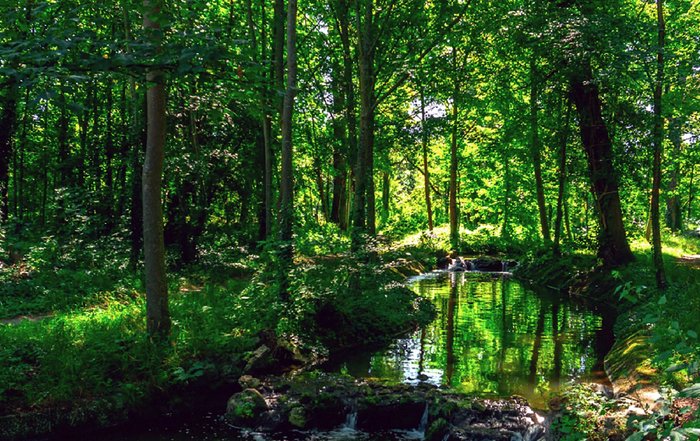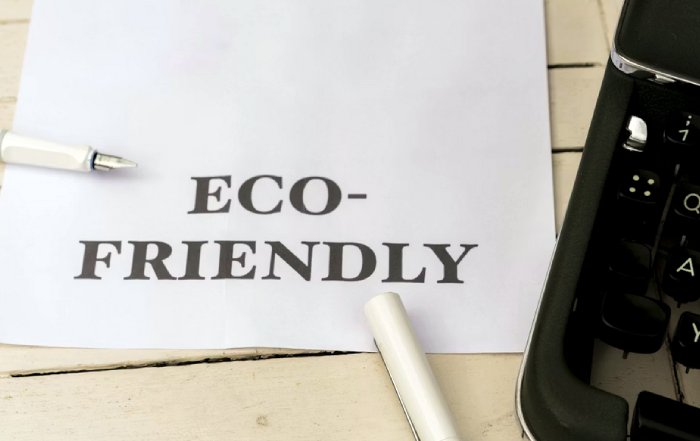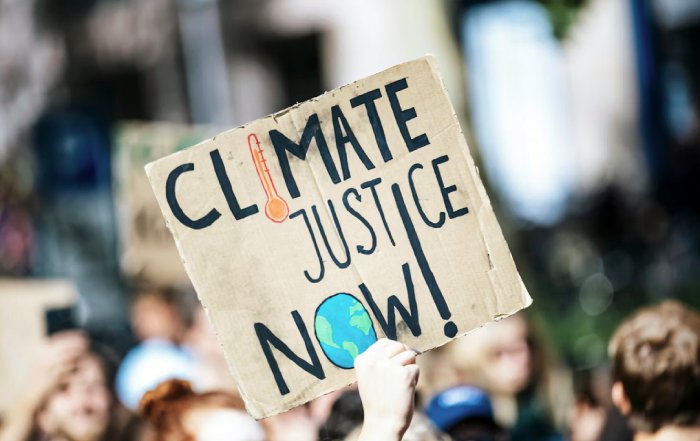The Importance of Ethical Supply Chains in a Changing Global Economy
Ethical Supply Chains as the New Business Imperative
In 2025, ethical supply chains have moved from a niche concern of corporate social responsibility departments to a central pillar of competitive strategy for organizations across the world, as businesses in the United States, United Kingdom, Germany, Canada, Australia, France, Italy, Spain, the Netherlands, Switzerland, China, Sweden, Norway, Singapore, Denmark, South Korea, Japan, Thailand, Finland, South Africa, Brazil, Malaysia, New Zealand and beyond face unprecedented scrutiny from regulators, investors, employees and consumers who demand transparency, integrity and measurable impact throughout the value chain. For eco-natur.com, whose mission is rooted in advancing sustainable living and connecting responsible businesses with conscious citizens, the importance of ethical supply chains is not an abstract concept but a daily reality that shapes how sustainability, circularity and social justice are communicated to a global audience seeking trustworthy guidance.
Ethical supply chains encompass far more than compliance with minimum legal standards; they integrate environmental stewardship, human rights, fair labor practices, anti-corruption measures, animal welfare, data transparency and long-term community resilience into every stage of sourcing, production, distribution and end-of-life management. Organizations that excel in this area demonstrate clear experience and expertise by mapping their supply networks, assessing risks, implementing robust governance frameworks and reporting progress in line with emerging global standards such as those advanced by the United Nations Global Compact, where businesses can learn more about responsible corporate practices. As markets evolve toward low-carbon, circular and regenerative models, supply chain ethics increasingly define corporate reputation, access to capital and license to operate.
From Compliance to Purpose: Redefining Supply Chain Responsibility
Historically, many companies approached supply chain ethics primarily through a compliance lens, focusing on audits, certifications and contractual clauses designed to minimize legal and reputational risks, yet this narrow view is no longer sufficient in an era in which stakeholders expect companies to demonstrate purpose-driven leadership and measurable positive impact. Leading organizations such as Unilever and Patagonia have shown that integrating ethical considerations into procurement, product design and logistics can create resilient, cost-effective and innovative business models that appeal to both mainstream and premium markets. Businesses that wish to understand how sustainability can be embedded into strategy can explore the work of the World Business Council for Sustainable Development, which provides extensive resources on sustainable business practices.
For the community that relies on eco-natur.com as a trusted resource on sustainability, this shift from compliance to purpose means that ethical supply chains must be understood not only as a risk management tool but as a foundation for long-term value creation, where environmental and social performance are intertwined with financial outcomes. Investors are increasingly using frameworks such as those of the Sustainability Accounting Standards Board and the Task Force on Climate-related Financial Disclosures, while regulators in Europe, North America and Asia are tightening due diligence requirements, as reflected in the European Union's Corporate Sustainability Due Diligence Directive, which is explained in detail on the European Commission's website for those who wish to explore evolving regulatory expectations. Ethical supply chains are therefore not a voluntary add-on but a core expectation for companies operating across global markets.
Human Rights, Labor Standards and the Social Dimension of Ethics
The social dimension of ethical supply chains begins with an uncompromising commitment to human rights and fair labor conditions, especially in sectors and regions where workers are vulnerable to exploitation, unsafe conditions, discrimination and wage theft. International frameworks such as the International Labour Organization's core conventions and the UN Guiding Principles on Business and Human Rights set clear expectations, and businesses that wish to deepen their understanding of decent work can review the ILO's resources on fundamental labor standards. However, translating these principles into practice requires detailed supply chain mapping, collaboration with local partners and continuous monitoring rather than reliance on one-off audits.
Companies that serve conscious consumers, including those highlighted on eco-natur.com in its coverage of sustainable business, increasingly recognize that living wages, safe workplaces, freedom of association and non-discrimination are not only moral imperatives but also drivers of productivity, quality and innovation. Research from organizations such as Harvard Business School and MIT Sloan has shown that firms with strong social and environmental practices often outperform peers over the long term, and readers can explore research on the business case for sustainability to better understand this relationship. In global supply chains spanning Asia, Africa, South America and Eastern Europe, companies must work with suppliers to build capacity, strengthen grievance mechanisms and ensure that vulnerable groups, including migrant workers and women in precarious employment, are protected and empowered, thereby aligning ethical commitments with tangible improvements in livelihoods.
Environmental Stewardship and the Path to Sustainable Living
Ethical supply chains are inseparable from environmental stewardship, as every stage of production and distribution has implications for climate, biodiversity, water resources and waste generation. For readers of eco-natur.com who are deeply engaged with sustainable living and nature conservation, the environmental dimension of supply chains is often the most visible, encompassing topics such as deforestation-free commodities, low-carbon logistics, renewable energy procurement, eco-design and circular material flows. Organizations that take this dimension seriously align their sourcing strategies with science-based targets, such as those promoted by the Science Based Targets initiative, whose resources on corporate climate action guide companies in reducing emissions in line with the Paris Agreement.
From a practical perspective, ethical supply chains in 2025 must address the entire lifecycle of products, from raw material extraction and agricultural inputs to manufacturing, packaging, transportation, use and end-of-life. Companies that integrate circular economy principles, as articulated by the Ellen MacArthur Foundation, which offers guidance on circular design and business models, can reduce environmental impacts while unlocking new revenue streams through reuse, repair, remanufacturing and recycling. For the eco-natur.com audience, these principles resonate strongly with the platform's focus on recycling, zero waste living and regenerative agriculture, illustrating how personal lifestyle choices intersect with corporate decisions along global supply chains.
Tackling Plastic, Waste and the Circular Economy Transition
Plastic pollution has become one of the defining environmental challenges of the 21st century, and ethical supply chains play a crucial role in addressing this crisis by redesigning products, packaging and distribution systems to minimize waste and prioritize reuse, refill and recyclability. For a platform like eco-natur.com, which has long advocated for plastic-free solutions, the connection between consumer choices and corporate responsibility is clear: businesses must eliminate unnecessary plastics, phase out hazardous additives, support robust recycling infrastructure and invest in alternative materials that do not simply shift environmental burdens elsewhere. Organizations such as Plastic Pollution Coalition and Break Free From Plastic provide extensive insights into these challenges, and readers can learn more about global efforts to reduce plastic waste.
Ethical supply chains that embrace circularity go beyond incremental packaging changes by rethinking entire business models, including how products are delivered, used and recovered at the end of their useful life. Companies in Europe, North America and Asia are experimenting with refill stations, deposit-return schemes, product-as-a-service models and reverse logistics networks that keep materials in circulation while reducing dependence on virgin resources. The World Economic Forum offers valuable perspectives on the circular economy and global value chains, helping businesses understand how collaboration across industries and borders can accelerate this transition. For eco-natur.com, highlighting such innovations underscores the message that ethical supply chains are not a constraint on profitability but a pathway to resilient, future-ready enterprises that align with the expectations of environmentally conscious consumers.
Protecting Wildlife, Biodiversity and Ecosystems
Ethical supply chains are increasingly evaluated through the lens of biodiversity and ecosystem health, as scientific consensus underscores the interconnected crises of climate change and nature loss. Activities such as deforestation, overfishing, habitat fragmentation and unsustainable agriculture directly affect wildlife and the resilience of ecosystems that provide essential services such as pollination, water purification and carbon sequestration. The work of organizations like WWF and the Intergovernmental Science-Policy Platform on Biodiversity and Ecosystem Services offers a rigorous foundation for understanding these dynamics, and those interested in the global state of nature can explore detailed reports on biodiversity loss.
For readers of eco-natur.com, who often seek ways to align personal choices with the protection of wildlife and habitats, the ethical performance of supply chains is a critical factor in evaluating products ranging from food and fashion to electronics and home goods. Companies that commit to deforestation-free supply chains, regenerative agriculture, sustainable fisheries and responsible mining contribute to the protection of species and landscapes, while those that ignore these issues risk contributing to irreversible ecological damage. The platform's dedicated content on wildlife and biodiversity and biodiversity protection highlights how certification schemes, traceability tools and collaborative landscape initiatives can help businesses align their sourcing practices with global conservation goals, supporting both local communities and global ecosystems.
Organic Food, Agriculture and Ethical Sourcing in the Food System
The global food system is one of the most visible arenas in which ethical supply chains intersect with daily life, as consumers in Europe, Asia, North America, South America, Africa and Oceania increasingly seek transparency about how their food is grown, processed and transported. Organic and regenerative agriculture practices that prioritize soil health, biodiversity, animal welfare and reduced chemical inputs are central to this transition, and organizations such as IFOAM - Organics International provide a wealth of information on organic standards and certification. For eco-natur.com, which has long emphasized the benefits of organic food for both human health and environmental sustainability, ethical supply chains are the mechanism through which these values are translated into tangible products on supermarket shelves and in local markets.
Food companies and retailers are increasingly expected to disclose the origins of their ingredients, the conditions under which farm workers are employed, the impacts on forests and water resources, and the measures taken to reduce greenhouse gas emissions throughout their supply chains. Resources from the Food and Agriculture Organization of the United Nations on sustainable agriculture and food systems help businesses and policymakers understand the complex trade-offs and opportunities involved in transforming the sector. For consumers who rely on eco-natur.com to guide their purchasing decisions, the presence of credible certifications, transparent labeling and verifiable commitments to fair trade and regenerative practices are key indicators of ethical sourcing, reinforcing the message that every meal can be an expression of values as well as taste.
Renewable Energy, Low-Carbon Logistics and Climate Accountability
In 2025, climate accountability has become a central criterion for evaluating the ethics of supply chains, as companies across industries are expected to measure, disclose and reduce emissions not only from their own operations but also from their upstream and downstream activities. The transition to renewable energy, efficient manufacturing and low-carbon logistics is therefore an essential component of ethical supply chain management. Organizations such as the International Energy Agency provide detailed analyses of clean energy transitions, offering valuable guidance for businesses seeking to decarbonize their operations and procurement strategies.
For eco-natur.com, which highlights the role of renewable energy in building a sustainable future, the integration of clean power and energy efficiency into supply chains is a recurring theme that connects corporate decisions with the broader global effort to limit warming to 1.5°C. Companies are increasingly turning to power purchase agreements, on-site solar and wind installations, green hydrogen, electrified fleets and optimized logistics networks to reduce emissions while improving resilience to volatile fossil fuel markets. The CDP (formerly Carbon Disclosure Project) provides a platform where companies and cities disclose their environmental impacts, and those interested in corporate climate performance can review disclosures and climate action data. Ethical supply chains framed through climate accountability therefore demonstrate not only environmental responsibility but also strategic foresight in a rapidly changing regulatory and market landscape.
Governance, Transparency and Building Trust with Stakeholders
Experience and expertise in ethical supply chain management are ultimately demonstrated through robust governance structures, transparent reporting and meaningful stakeholder engagement, which together build the trust that underpins long-term business success. Boards of directors and executive teams are increasingly accountable for overseeing supply chain risks and opportunities, integrating them into enterprise risk management, incentive structures and strategic planning. Guidance from organizations like the OECD on responsible business conduct and due diligence helps companies design governance frameworks that align with international expectations and local realities.
Transparency is a critical enabler of trust, as stakeholders expect companies to disclose not only their policies and commitments but also their performance, challenges and plans for continuous improvement. Sustainability and integrated reports aligned with frameworks such as the Global Reporting Initiative and the International Sustainability Standards Board's standards provide structured ways to communicate progress. Readers interested in how leading companies report on supply chain issues can explore GRI's resources on supply chain disclosure. For eco-natur.com, which positions itself as a reliable source of information on the sustainable economy and corporate responsibility, trustworthiness is reinforced by highlighting organizations that provide verifiable data, independent audits and third-party assurance, enabling audiences across regions to make informed decisions about the brands they support.
Regional Dynamics: Global Standards, Local Realities
While ethical supply chains are shaped by global norms and expectations, their implementation is profoundly influenced by local contexts, regulatory frameworks and cultural norms across regions such as Europe, Asia, Africa, North America, South America and Oceania. In the European Union, stringent regulations on human rights due diligence, environmental protection and product safety are driving higher standards that often influence global suppliers, while in the United States, investor pressure and state-level legislation are encouraging greater transparency on issues such as conflict minerals, forced labor and carbon emissions. In Asia, major economies like China, Japan, South Korea and Singapore are developing their own sustainability frameworks and green finance initiatives, which are reshaping regional supply chains and trade flows.
Organizations such as the World Bank provide rich analyses on global value chains and development that help businesses understand how ethical supply chains can contribute to inclusive growth and poverty reduction. For eco-natur.com, which serves a worldwide audience interested in global sustainability trends, it is essential to emphasize that ethical supply chain strategies must be adapted to local realities, engaging suppliers, communities and regulators in co-creating solutions rather than imposing one-size-fits-all standards. This contextual understanding enhances the platform's authoritativeness by acknowledging both the shared principles and the diverse pathways through which ethical supply chains can be realized in different countries and sectors.
The Role of Design, Innovation and Consumer Engagement
Ethical supply chains are shaped long before production begins, as decisions made at the design stage determine material choices, manufacturing complexity, repairability, recyclability and overall environmental and social footprint. Forward-looking companies integrate eco-design and human-centered design principles to create products and services that are not only functional and aesthetically appealing but also aligned with sustainability and ethical sourcing goals. Design schools and innovation hubs worldwide are collaborating with industry to embed these principles into curricula and practice, and organizations such as IDEO and the Design Council in the UK offer insights into design for social and environmental impact.
For eco-natur.com, which explores sustainable design and lifestyle, consumer engagement is an equally important dimension of ethical supply chains, as informed and empowered customers can drive demand for responsible products and hold companies accountable for their claims. Digital tools such as product traceability apps, QR codes, blockchain-based provenance systems and third-party certification databases enable consumers to verify information about origin, materials and labor conditions. Organizations like Consumer Reports and Ethical Consumer provide independent evaluations of brands and products, and readers can learn more about how consumer advocacy influences corporate behavior. By highlighting these tools and resources, eco-natur.com strengthens its role as a bridge between ethical businesses and the individuals and communities who seek to align their purchasing decisions with their values.
Health, Wellbeing and the Human Dimension of Ethical Choices
Ethical supply chains are ultimately about people, and their impacts extend beyond workers and communities to the health and wellbeing of consumers who interact with products and services every day. Issues such as product safety, toxic chemicals, nutritional quality, data privacy and mental wellbeing are increasingly recognized as part of the ethical landscape that companies must navigate. Organizations such as the World Health Organization provide comprehensive evidence on environmental health and chemical safety, helping businesses understand how material choices and production processes can affect human health across generations.
For the audience of eco-natur.com, whose interest in health and sustainable living often motivates their engagement with sustainability topics, ethical supply chains offer reassurance that the products they bring into their homes and workplaces are not only environmentally responsible and socially just but also safe and supportive of holistic wellbeing. Companies that eliminate hazardous substances, prioritize non-toxic materials, ensure product integrity and communicate transparently about potential risks demonstrate a deeper level of responsibility that aligns with the platform's emphasis on trustworthiness and long-term value. This human-centered perspective reinforces the message that ethical supply chains are not an abstract corporate concern but a tangible factor in everyday life, influencing everything from the air people breathe to the food they eat and the clothes they wear.
Looking Ahead: Ethical Supply Chains as the Backbone of a Sustainable Future
As 2025 unfolds, ethical supply chains stand at the heart of the transition toward a more sustainable, equitable and resilient global economy, shaping how businesses operate, how governments regulate and how individuals make choices. For eco-natur.com, whose mission is to guide readers toward responsible lifestyle choices and to showcase businesses that embody experience, expertise, authoritativeness and trustworthiness, the importance of ethical supply chains cannot be overstated, because they represent the concrete manifestation of values that are often discussed in abstract terms. Companies that invest in transparency, collaboration, innovation and continuous improvement across their supply networks are better positioned to navigate disruptions, meet stakeholder expectations and contribute positively to the communities and ecosystems on which they depend.
The path forward will require sustained commitment from organizations of all sizes, across all regions and sectors, as well as supportive policy frameworks, informed consumers and robust civil society oversight. Yet the momentum is clear: ethical supply chains are rapidly becoming the default expectation rather than the exception, and those who embrace this reality will help define the next chapter of sustainable business and global development. In this evolving landscape, eco-natur.com will continue to provide insights, resources and inspiration for those who recognize that every product has a story, and that by choosing and supporting ethical supply chains, businesses and individuals together can shape a future in which economic prosperity, social justice and environmental integrity reinforce rather than undermine one another.








